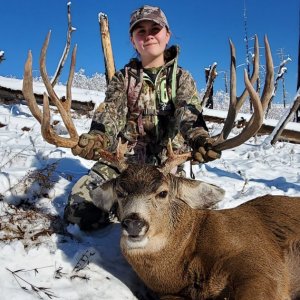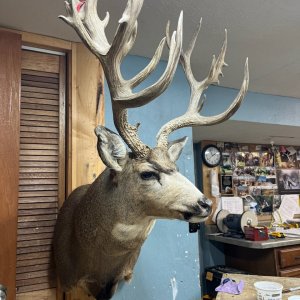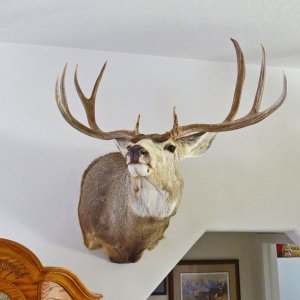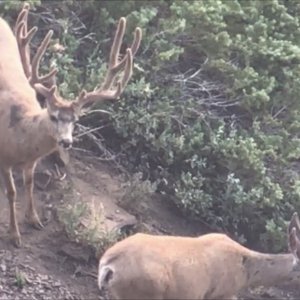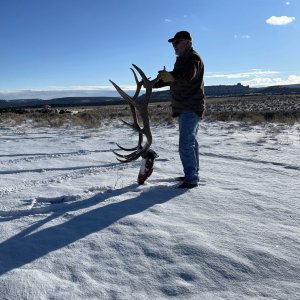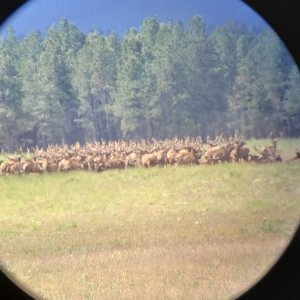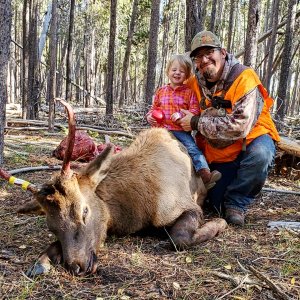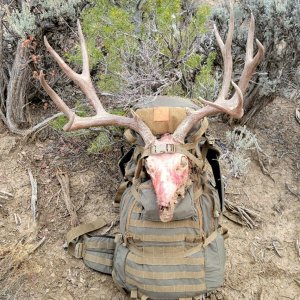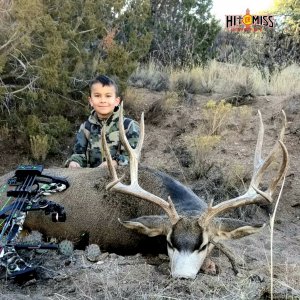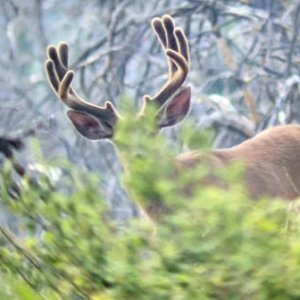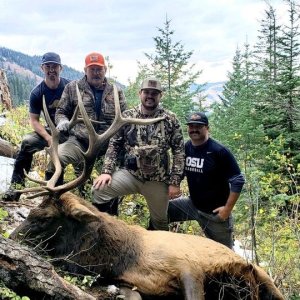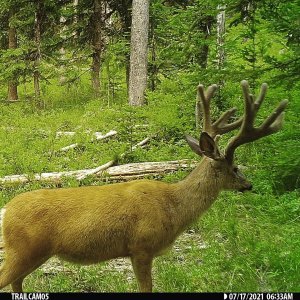Here is an idea that I gave to NEBO about 4 months ago and to other Sportsman's Groups. It is mice to see Pinenut has thought along the same lines. It is an idea, a safety net approach which could help maintain the current system. I am against further fragmenting of Regions. We already have sub-units within the Regions. Also, only 3 Limited Entry units in Utah have a higher buck doe ratio than 25 per 100. Colorado is "so awesome", yet they include FAWNS in their buck ratios and the Colorado unit I will hunt this year has a mature buck ratio of 2 per 100, yes Co 2 per 100.
-Keep the 15-20 bucks per 100 doe (post season) objective. But manage for the middle ground 17-19, not the low end.
-Keep the 9 day season when the region has a buck-doe ratio of 17+.
-If a region is at 15-16 bucks per 100 doe, institute a 5 day season region wide.
-If a region is below 15 bucks per 100 doe institute a 10% or more cut in tags and make the region a 3 day season.
-All decreases in days afield or tag reductions should remain in place 1 year after the region has recovered to the 17-19 buck objective.
-If a region falls below 10 bucks per 100 doe, the region will be closed until the buck doe ratio rises above 10.
-If a region is at 20+ bucks per 100 doe then tag increases of 10% should be instituted on a year to year basis.
-SUBUNITS within Regions may also be manipulated by shortening seasons to 5 or 3 days.
-All Weapon types will participate in reduced opportunity when a herd is below or under objective.
-Rifle and Muzzleloader will be restricted to 5 or 3 day hunts, while archery hunts will be restricted to 14 or 10 day hunts respectively.
-All tags (rifle, archery, muzzleloader and Dedicated hunters) will be restricted to their Region of choice for all hunts (archery, rifle muzzleloader), except for the Uintah and Wasatch Extended archery hunts which will remain open to all archery tag holders.
-Mandatory check-in of harvested bucks. (This is already done in many states, where sheriffs also aid in documenting harvest counts.)
-The Northern Region:
-Split the Northern Region along I-15, keeping the remaining region boundaries for each unit.
-A study should be done to assess the pressure on both public and private lands.
-There should be 2 types of tags for both Northern Regions: This will allow for a reduction in hunting pressure on public lands herds.
-1 Public lands draw tags which may be used on both public and private lands. (Allowing their use on private lands will take pressure off of public land herds.)
-2 Private lands draw tags which may ONLY be used on privately held lands, not in CWMUs. These tags would not be valid for Public Lands.
-Private lands tags will be nontransferable and may be obtained by anyone. It would be strongly recommended to obtain permission to hunt private lands prior to applying for such tags.
-Both Public and Private Lands tags would be given thru the regular drawing.
Long read, but some thoughts
-------------------------
www.sagebasin.com
-------------------------

